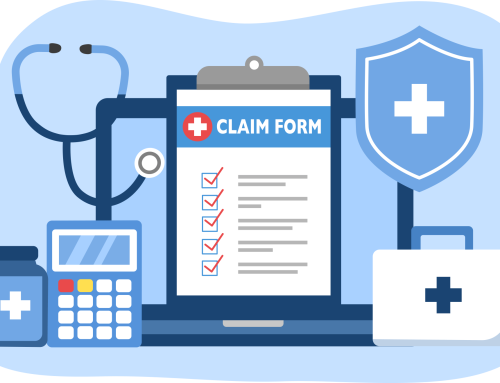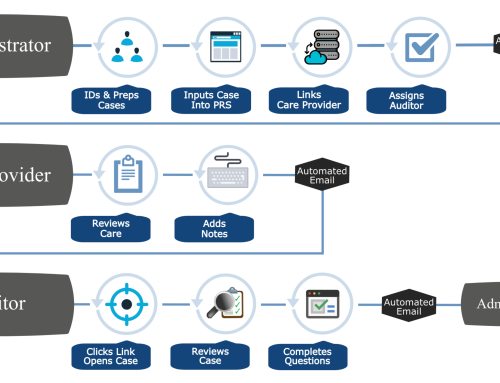Healthcare chart audits play a pivotal role in maintaining the integrity and quality of patient care within the medical field. These comprehensive reviews of patient records and documentation ensure that healthcare providers are delivering the best possible care while adhering to regulatory standards and guidelines. In this blog post, we will explore five critical insights that emerge from healthcare chart audits, shedding light on the importance of these evaluations in the healthcare landscape.
What Are Chart Audits in Healthcare?
Chart audits in healthcare refer to a systematic review and evaluation of patient medical records, charts, or electronic health records (EHRs) to assess the quality, accuracy, and completeness of documentation and care delivery. These audits are an integral part of healthcare quality improvement and compliance processes, aiming to ensure that healthcare providers adhere to established standards, guidelines, and regulatory requirements.
Key components of chart audits include:
- Documentation Review: Chart auditors examine various aspects of patient records, such as clinical notes, diagnostic reports, treatment plans, medication orders, and consent forms. They assess whether the documentation accurately reflects the care provided to patients.
- Compliance Assessment: audits also focus on ensuring compliance with healthcare regulations, laws, and industry-specific standards. This includes checking for proper coding, billing accuracy, and adherence to privacy and security regulations like HIPAA (Health Insurance Portability and Accountability Act).
- Quality of Care: Another critical aspect of audits is assessing the quality of care delivered to patients. Auditors evaluate whether the documented care aligns with evidence-based practices and clinical guidelines, promoting patient safety and positive outcomes.
- Identification of Deficiencies: Audits identify deficiencies in documentation or care delivery, helping healthcare organizations pinpoint areas that require improvement. These deficiencies can include missing information, incomplete records, or deviations from best practices.
- Feedback and Education: Following a chart audit, healthcare providers receive feedback on their performance, which can serve as a valuable educational opportunity. Providers can learn from audit findings and enhance their documentation and care delivery skills.
Audits can be conducted by internal teams within healthcare organizations, external auditing firms, or regulatory agencies. They are essential for maintaining patient safety, improving healthcare quality, and ensuring legal and regulatory compliance.
Why Are Chart Audits Performed?
Audits serve several important purposes in the healthcare industry, contributing to the overall quality of patient care and organizational efficiency. Here are some key reasons why chart audits are performed:
- Quality Assurance: Chart audits are a fundamental tool for monitoring and maintaining the quality of healthcare services. By reviewing patient records, healthcare organizations can identify and address issues that may compromise patient safety or the effectiveness of care.
- Regulatory Compliance: Healthcare facilities must adhere to a myriad of regulations and standards, including those related to billing, privacy, and clinical care. Chart audits help ensure that healthcare organizations remain compliant with these regulations, reducing the risk of legal and financial penalties.
- Risk Management: Identifying deficiencies in documentation and care delivery through chart audits allows healthcare organizations to proactively manage risks. Addressing these issues can help prevent adverse events, malpractice claims, and patient complaints.
- Quality Improvement: The insights gained from chart audits can inform continuous quality improvement efforts. Healthcare providers can use audit findings to refine their practices, enhance care protocols, and implement corrective actions to prevent recurring issues.
- Billing Accuracy: Chart audits play a crucial role in verifying the accuracy of medical billing and coding. Accurate billing is essential for proper reimbursement, revenue integrity, and avoiding allegations of fraud or abuse.
- Education and Training: Chart audit results can be used for educational purposes. Providers and staff can receive targeted training and education based on audit findings, helping them improve their documentation skills and clinical practices.
- Performance Evaluation: Chart audits are often used as part of performance evaluation processes for healthcare providers. They can help assess the competency and adherence to best practices among clinicians, nurses, and support staff.
Chart Audits: The Pillar of Healthcare Quality Assurance
Chart audits serve as the cornerstone of quality assurance in healthcare organizations. These audits involve a meticulous examination of patient charts, medical records, and documentation, with a focus on accuracy, completeness, and compliance with established protocols. By conducting regular chart audits, healthcare facilities can identify and rectify issues promptly, reducing the risk of medical errors and enhancing the overall quality of patient care.
Best Practices:
- Conduct regular, scheduled chart audits to ensure consistency and thoroughness.
- Utilize a standardized checklist or tool for chart audits to maintain uniformity.
- Involve a multidisciplinary team, including clinical staff, in the audit process for a comprehensive assessment.
Compliance with Regulatory Standards
One of the primary objectives of healthcare chart audits is to ensure compliance with regulatory standards. The healthcare industry is subject to numerous regulations and guidelines at both the federal and state levels. Failing to adhere to these standards can result in severe penalties and, more importantly, jeopardize patient safety. Chart audits help healthcare organizations identify areas where they may be falling short of compliance and take corrective actions promptly.
Best Practices:
- Stay up-to-date with evolving healthcare regulations and guidelines.
- Document compliance efforts meticulously, including training and policy implementation.
- Establish a compliance officer or team responsible for monitoring regulatory adherence.
Identifying Documentation Errors
Accurate and thorough documentation is crucial in healthcare. Inaccurate or incomplete records can lead to misunderstandings, medical errors, and even legal issues. Chart audits play a vital role in identifying documentation errors such as missing or illegible information, incorrect data entry, or incomplete records. Addressing these issues promptly can improve the quality of patient care and minimize the potential for costly mistakes.
Best Practices:
- Implement a system for real-time documentation review and correction.
- Provide ongoing training and education to staff on accurate and complete documentation.
- Encourage a culture of accountability and responsibility among healthcare professionals.
Enhancing Clinical Decision-Making
Chart audits not only focus on administrative aspects but also on clinical documentation. Accurate clinical records are essential for informed decision-making by healthcare providers. Through chart audits, healthcare organizations can identify areas where clinical documentation may be lacking or inconsistent. This insight allows them to provide better support to their clinical staff, improve patient care, and enhance overall operational efficiency.
Best Practices:
- Promote clear and concise clinical documentation.
- Use chart audit findings to tailor additional training or support for clinical staff.
- Implement clinical decision support tools to aid healthcare providers in making informed choices.
Continuous Quality Improvement
In conclusion, healthcare chart audits are indispensable tools for maintaining and improving the quality of patient care. They serve as a proactive means of ensuring compliance with regulatory standards, identifying documentation errors, enhancing clinical decision-making, and driving continuous quality improvement within healthcare organizations. By embracing the insights gained from chart audits and following best practices, healthcare providers can not only mitigate risks but also excel in delivering optimal care to their patients.
Best Practices:
- Establish a feedback loop that incorporates audit findings into quality improvement initiatives.
- Regularly review audit results with staff to foster a culture of continuous improvement.
- Embrace technology and data analytics to identify trends and opportunities for enhancement.
Chart audits are not just a regulatory requirement but a powerful mechanism for achieving excellence in healthcare. As the healthcare landscape continues to evolve, the insights gleaned from chart audits will become increasingly valuable in shaping the future of patient care. Therefore, it is imperative that healthcare organizations prioritize the implementation of robust chart audit processes to safeguard their patients and maintain the highest standards of care.
Contact BHM Healthcare Solutions To Learn More
| Editor’s Note: BHM Healthcare Solutions offers case review and medical director expertise, business intelligence, software, CIA consulting services and accreditation support focused on improving patient care. Contact BHM for a brief discussion on how BHM achieves success. CLICK HERE |






Leave A Comment